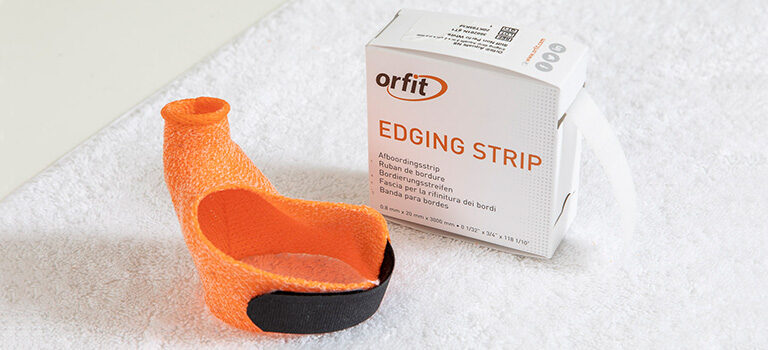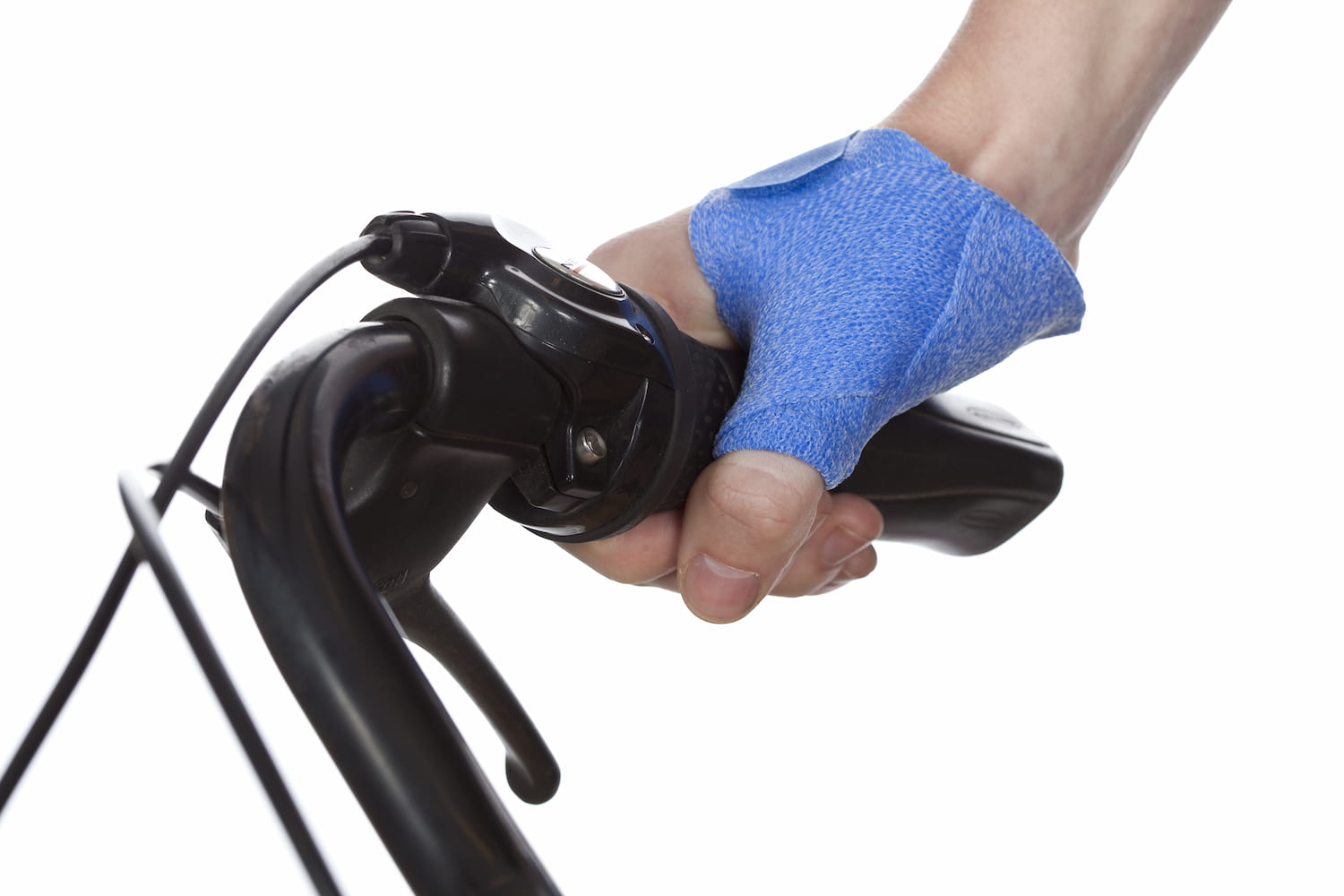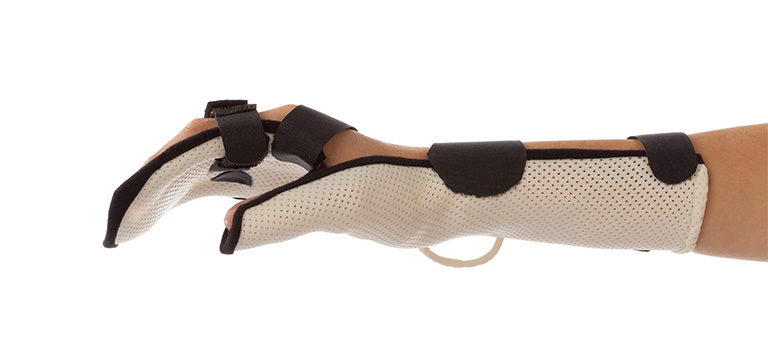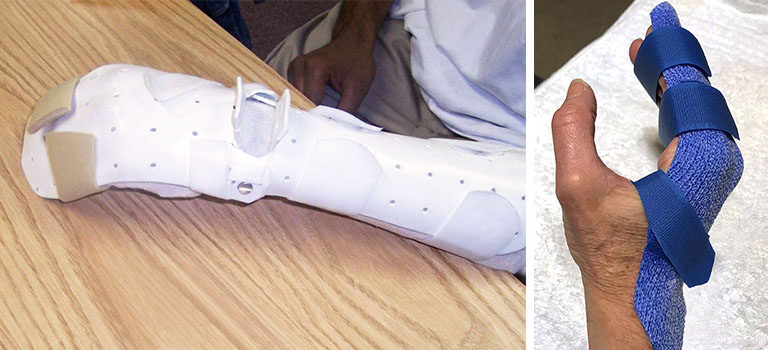
Hand Therapy for Cyclists
Advice on orthoses and other strategies to reduce symptoms of peripheral neuropathies
In nice weather, I like to go for long bike rides, but I do experience irritation and tingling of my ulnar-sided fingers with continuous pressure on the handlebars. I discovered the benefits of wearing an Orficast orthosis inside my biking gloves which greatly helps reduce the numbness and tingling I feel.
A recently published systematic review in the Journal of Hand Therapy highlights other strategies to reduce and avoid symptoms of peripheral neuropathies in cyclists. The median and ulnar nerves are the most commonly affected nerves at very specific sites.

Commonly affected nerves in cyclists
Here are the specific sites and the associated motor and/or sensory issues:
The ulnar nerve:
- Main trunk of the nerve proximal or within Guyon’s Canal – causing sensory loss of 4th and 5th fingers with weakness of all ulnar intrinsic muscles
- The deep terminal branch proximal to branches to the hypothenar muscles – weakness of all ulnar intrinsic muscles
- The deep terminal branch distal to branches to the hypothenar muscles – weakness of all intrinsic ulnar muscles except hypothenar muscles with no sensory loss
- The superficial terminal branch – sensory loss
The median nerve:
- The lateral terminal branch – wasting and weakness of thenar muscles
- The palmar cutaneous branch – numbness and tingling over the thenar eminence
Strategies to avoid nerve compression in cyclists
![]() The authors included 20 studies in their review, but the quality of these studies was considered low to moderate.
The authors included 20 studies in their review, but the quality of these studies was considered low to moderate.
The studies suggested the following strategies to reduce and/or avoid compression of these sites:
- The use of orthoses (at night) such as elbow orthoses to prevent tension across the ulnar nerve at the elbow and wrist orthoses to prevent tension across the median and ulnar nerves at the wrist
- Changing positions of the neck, shoulder girdle, upper limb, and hands
- Adaptation of the handlebars with padding, and/or handlebar grips
- Changing the riding position or posture
- Wearing cycling (padded) gloves
In conclusion
Overall, the authors found studies that supported rest, decreasing activity, and the use of orthoses to reduce symptoms. However, they could not make evidence-based conclusions as to the most successful treatment. They did cite several studies which proposed hand strengthening exercises such as grip strengthening, and range of motion exercises for the neck and wrist. Additional articles suggested the use of non-steroidal anti-inflammatory medicines (NSAIDS) to reduce pain and inflammation.
In summary, there was insufficient evidence to suggest clear and effective measures for reducing compression of the median and ulnar nerves in cyclists. But the above suggestions are a good starting point.
Orthotic fabrication idea
Here is a video demonstration of the orthosis I wear inside my cyclist gloves:
Want to learn more?
At the Orfit Academy, our virtual learning platform, we offer various courses on orthoses that might benefit cyclists, such as:
- Elbow Orthoses
- Wrist Orthoses
- Ulnar and Median and Ulnar Nerve Dysfunction and Orthotic Solutions
Create your free Orfit Academy account here and get access to all of our splinting courses.
Reference
![]()

Written by Debby Schwartz, OTD, OTR/L, CHT
Physical Rehabilitation Product and Educational Specialist at Orfit Industries America.
Debby is a certified hand therapist with over 36 years of clinical experience. She completed her Doctorate of Occupational Therapy at Rocky Mountain University of Health Professions in 2010. She has worked at Orfit Industries America as Product and Educational Specialist since 2007.
Debby is also an adjunct professor at the Occupational Therapy Department of Touro University, School of Health Sciences, and at the Occupational Therapy Department at Yeshiva University, Katz School of Science and Health in NYC. She has written many book chapters in the field of hand therapy and multiple articles for hand therapy journals, including the ASHT Times and the Journal of Hand Therapy. She has published a new textbook on orthotic fabrication together with Dr. Katherine Schofield, entitled “Orthotic Design and Fabrication for the Upper Extremity: A Practical Guide”.
![]()
If you’d like to receive the latest product updates and interesting Orfit news, subscribe to our newsletter:



